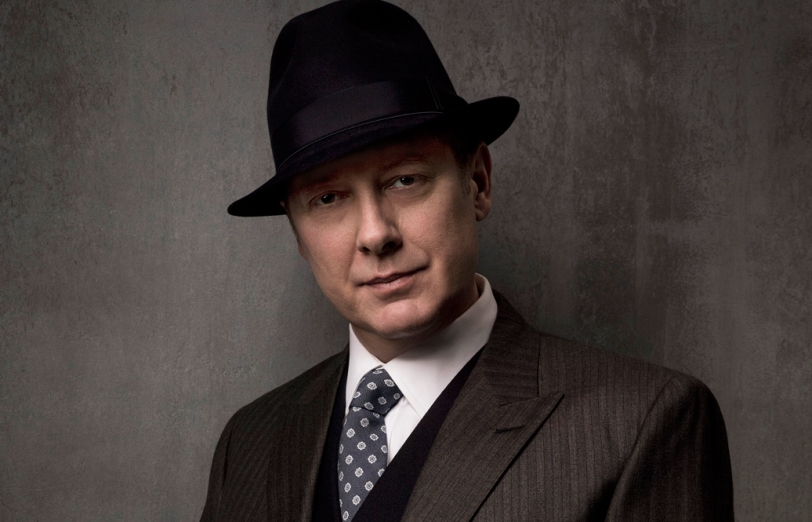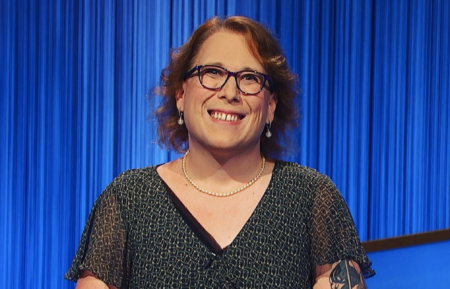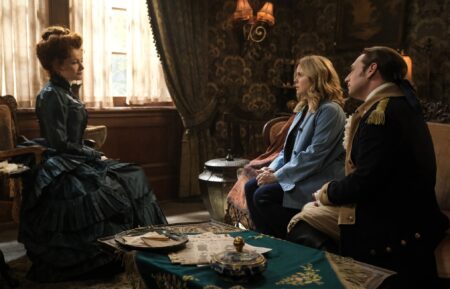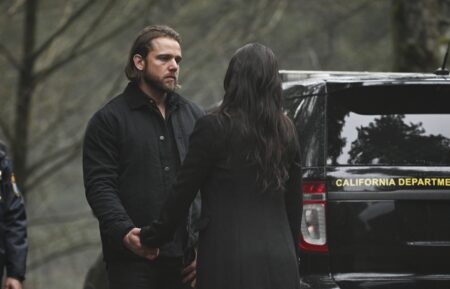The Strategy Behind What to Air After The Super Bowl

NBC’s hit The Blacklist has enjoyed a plum Monday night timeslot behind The Voice since it launched — but that couldn’t last forever. While The Voice is still strong, NBC needs to use that spot to launch other shows. And the Peacock network could use a boost on Thursday, where James Spader and company are now moving.
The Blacklist move comes with plenty of risk. That’s where the Super Bowl comes in. NBC might not have made the change without the big game assist. But The Blacklist’s impending relocation should now benefit from such a major platform. “There is no better launch pad, exposing it to that huge number of people,” says Jeff Bader, NBC’s president of program planning, strategy and research.
Sunday night’s episode is part one of two, further driving viewers to the conclusion on Thursday in its new home. The episode was designed with both fans and newcomers in mind, to either introduce or re-introduce viewers to The Blacklist. “It has to make sense coming in cold,” Bader says.
The Blacklist is a good example of using the post-Super Bowl spot by taking a hit show, still early in its run, and giving it a chance to solidify a large fan base. Recent examples include Elementary (2013), Glee (2011), The Office (2009) and House (2008). “What I think networks discovered is when you put on a young show that has some heat going into it, this could be the thing that pushes it into a new level of viewership,” Bader says.
Until the 1980s, the networks ignored the post-Super Bowl timeslot, instead sticking newscasts, golf tournaments, local programming or (in three instances) Lassie after the big game.
But then came The A-Team in 1983. NBC decided to schedule the first regular episode of the adventure show after Super Bowl XVII, and helped turn that show into an immediate hit. (ADD: To clarify, The A-Team premiered to big ratings the week before, but its appearance behind the Super Bowl woke up the networks, which realized they could be strategic behind the big game.) The other networks caught on, and launched several new shows behind the Super Bowl in the following years. The pinnacle was The Wonder Years, which debuted to 29 million viewers after Super Bowl XXII on ABC in 1988.
From there, the practice of launching new shows behind the game fizzled. Grand Slam (1990) and Davis Rules (1991) were duds. The final straw came in 1995, when ABC premiered the instantly forgettable Extreme.
“The benefit of putting in a new show is you’re getting exposure to over 100 million people,” Bader says. “But the survival of new shows is alchemy, you don’t know what goes into the magic of shows actually working.”
The next year, NBC tossed out the old playbook and went a new direction: The network aired a special hour-long edition of Friends, right when the show was at its cultural peak. “The One After the Superbowl (Parts 1 and 2)” attracted 53 million viewers, and still holds the record for most-watched show after the big game. (ADD: It’s also worth noting, as one of the architects of that strategy points out, the other big seachange that year was the realization at the networks that putting a popular show behind the Super Bowl not only is more of a ratings bonanza, but it translates to heftier ad sales — particularly if the show is announced early enough, during the network upfront sales season.)
Fox followed suit the next year with The X-Files, which was also at its height of popularity. In 2001, CBS used the platform for the highly anticipated second edition of Survivor, and was rewarded with 45 million viewers.
CBS flipped the game plan again in 2010, premiering the reality series Undercover Boss to 39 million viewers. But the networks have otherwise stuck with airing established shows in the slot. Last year, Fox aired two shows: New Girl (26.3 million) and Brooklyn Nine-Nine (which, because there is plenty of tune-out in the hour that follows the Super Bowl, went down to 15.1 million).
“You want to pick a show that you think can take advantage of being exposed to the largest number of people it will ever be exposed to,” Bader says. “Ideally you want something that has some male appeal because it’s football. But, granted, it’s everybody. I think you want to try to have something as broad as possible.”
There are still plenty of variables when it comes to delivering big audiences to the post-Super Bowl program. “You can’t control when the game actually ends, or how much time there is between the end of the game and the start of your show,” Bader notes. He was at ABC in 2003 when Alias didn’t air until after 11 p.m. ET due to a long game and lengthy post-game (including a Bon Jovi performance). In 2013, CBS’ Elementary didn’t air until 11:11 p.m. ET — still the latest start time ever for a post-Super Bowl broadcast.
Also adding some complication: If viewers don’t set their DVR to record well after the scheduled start and stop times, they may miss the show. “We are having so many conversations about how to counter some of that,” Bader says. “We’re hoping people are savvy enough to know to record NBC that night, not individual shows, or record The Blacklist with an extension on it.”
But in case viewers miss it, there’s always video on demand, and NBC will also repeat the episode on Thursday at 8/7c, leading in to the conclusion of the two-parter at 9/8c.
“It’s a huge opportunity,” Bader says of the post-Super Bowl slot (which only comes around every three years for NBC, CBS and Fox). “You just hope it’s a great game until the end and you hope people stick around for the start of your show.”
In this week’s new episode of K.C. Undercover, Zendaya (the titular K.C.), will reunite with her former Shake It Up co-star Bella Thorne (who played CeCe.) When K.C.’s awkward brother starts dating a smart, beautiful girl, played by Thorne, K.C. suspects the newcomer is actually a spy.
The final guest appearance of the weekend will be Corey Fogelmanis (Farkle from Girl Meets World) guest starring on I Didn’t Do It as Stevie Moops, an “obnoxious rich kid” who tries to buy Lindy’s affection.
The episodes will air April 17-19, but verified users on WATCH Disney Channel will get a chance to see the shows first: one new episode from the “What the What?!?” lineup will roll out each day on the online service starting April 13.





